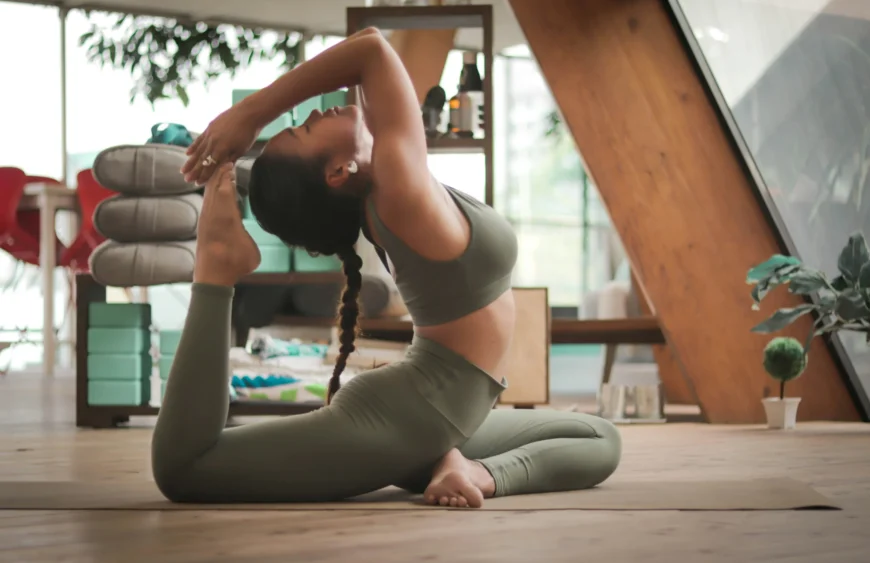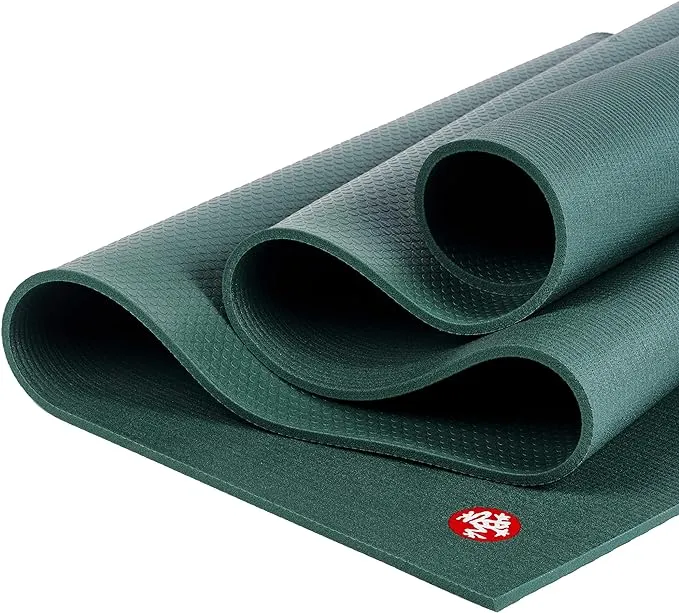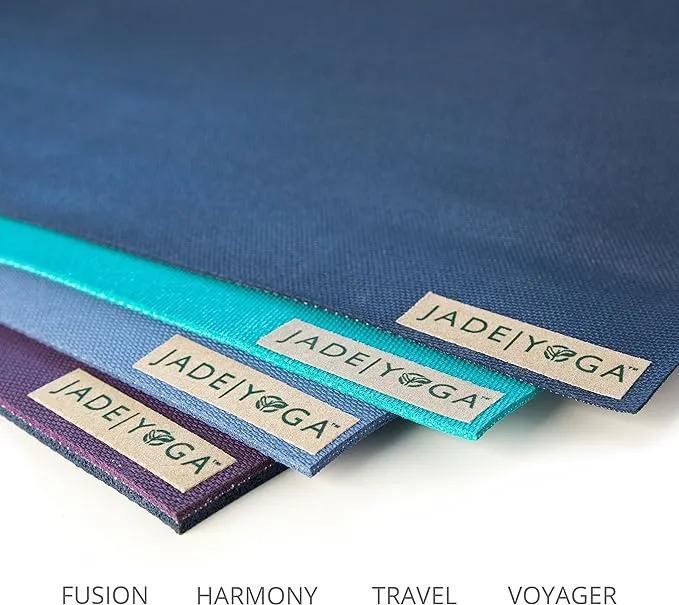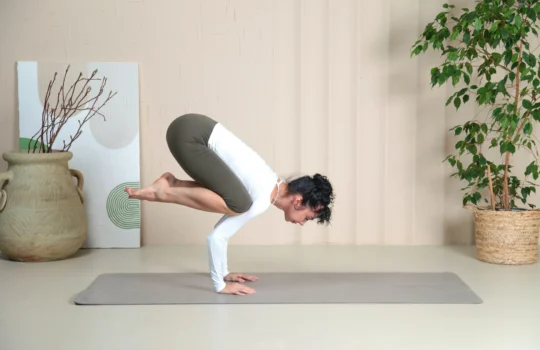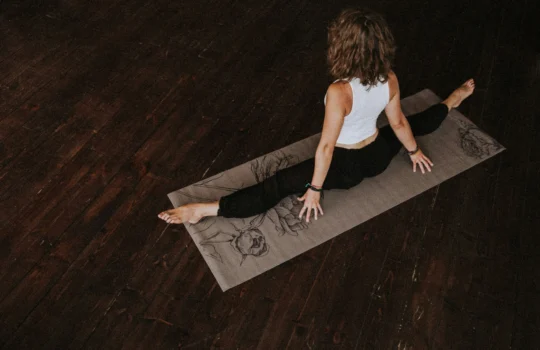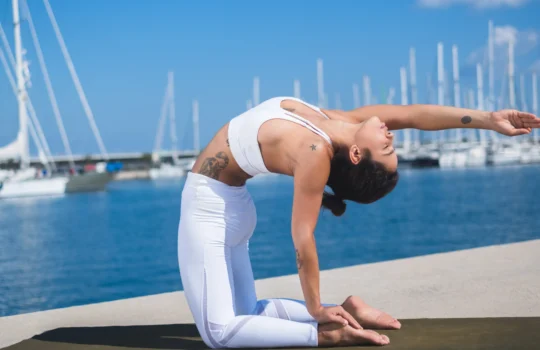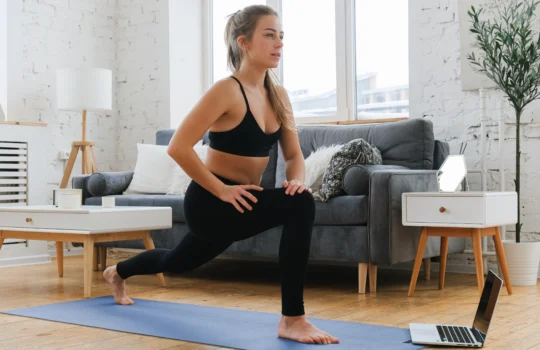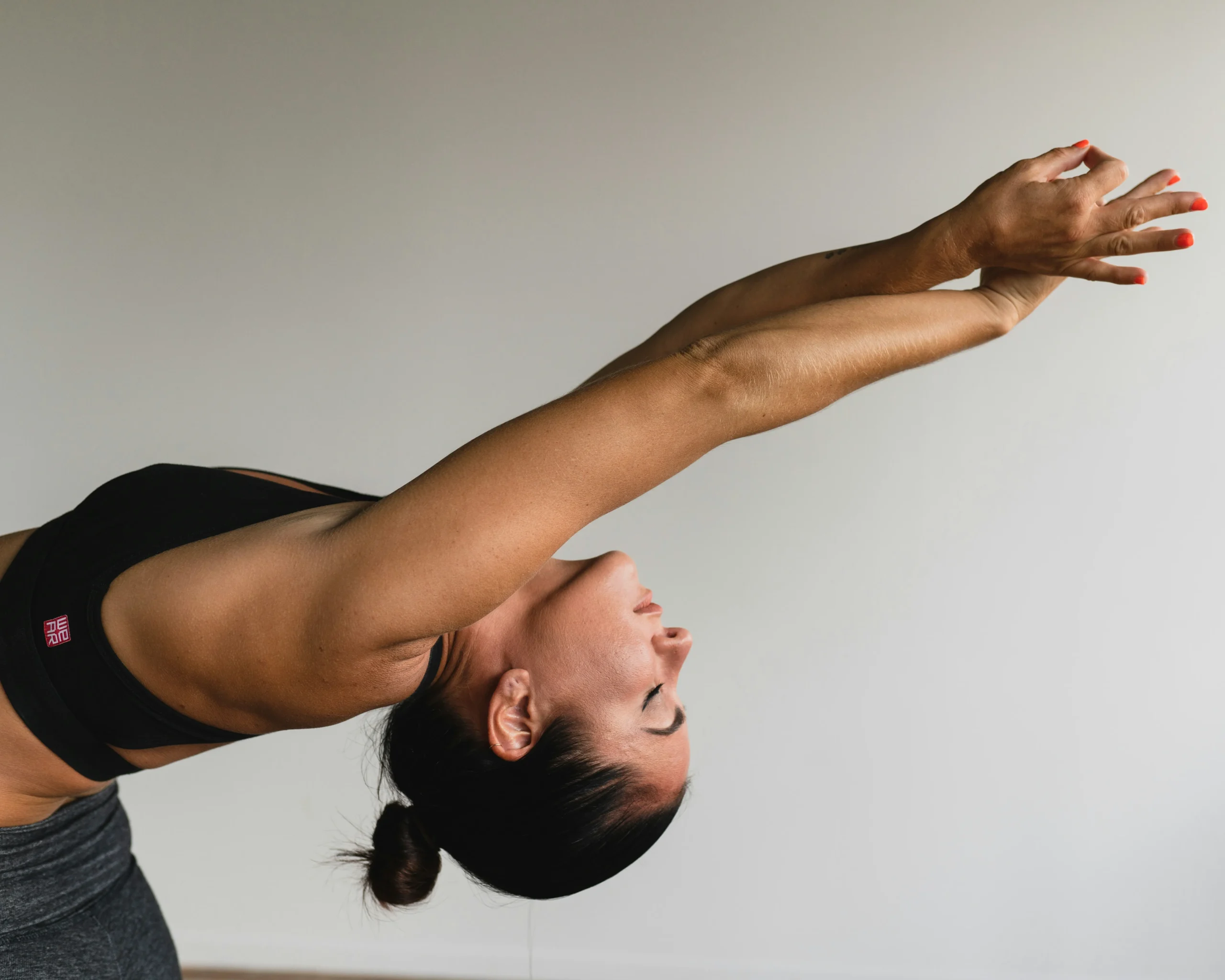Hot yoga is not your typical chill yoga class—it’s a total sweat fest! Imagine doing your favorite yoga poses, but in a room heated up to 90 degrees or more. This intense heat ramps up the workout, helping you stretch further and sweat out toxins like you wouldn’t believe. But let’s be real: when you’re dripping sweat, a regular yoga mat just won’t cut it. You’ll slip, slide, and might not get the grip you need.
In this blog post, we’re diving into what makes a yoga mat perfect for hot yoga. From keeping you stable during those tricky poses to ensuring you’re as comfortable as possible in that sauna-like studio, we’ve got the scoop. Whether you’re a hot yoga pro or just thinking about giving it a try, stick with us to find the best mat that won’t let you down when things heat up!
Table of Contents
The Needs of Hot Yoga Practice
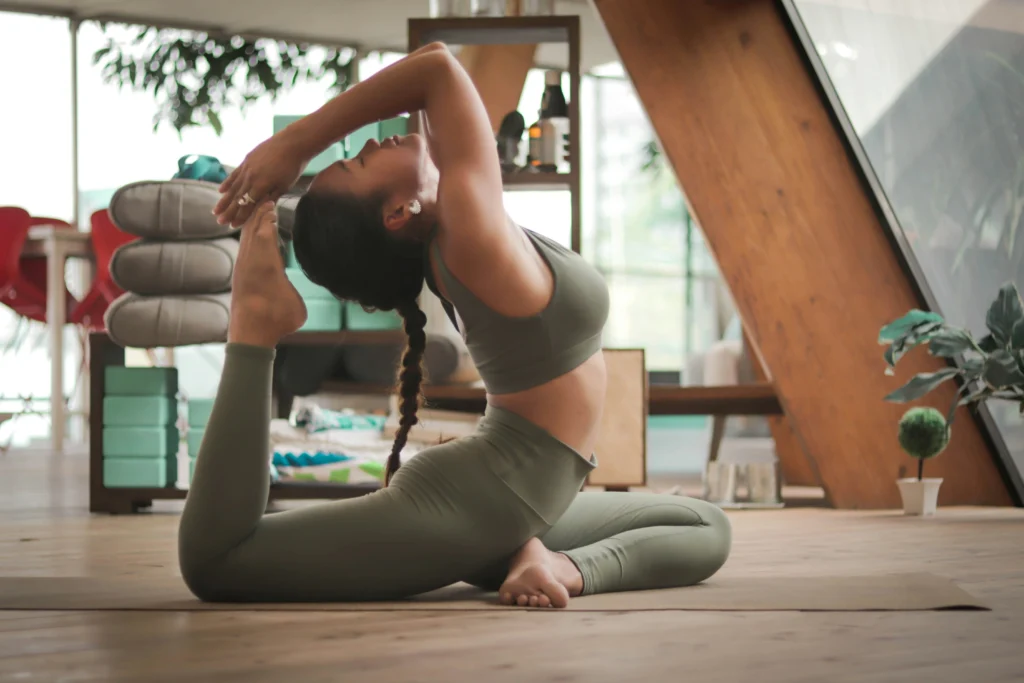
Hot yoga presents a unique set of demands that require careful consideration when choosing a yoga mat. Understanding these needs is essential for selecting a mat that can withstand the rigors of a heated practice environment. Let’s delve into the specific challenges posed by hot yoga and how they influence the selection of an appropriate yoga mat.
- Increased Sweat Production: In hot yoga, the body’s natural cooling mechanism kicks into overdrive as it strives to maintain a stable internal temperature. This results in profuse sweating, which can create slippery conditions on the yoga mat. As such, practitioners need a mat that offers superior grip and traction to prevent slips and falls during poses and transitions.
- Enhanced Heat and Humidity: The heated environment of a hot yoga studio amplifies both the temperature and humidity levels, creating a challenging setting for yoga practice. Traditional yoga mats may struggle to maintain their grip and integrity in such conditions, leading to deterioration over time. Hot yoga mats are specially designed to withstand these extreme conditions, offering enhanced durability and performance.
- Moisture-Wicking Properties: Given the high levels of sweat produced during hot yoga, moisture-wicking properties are essential in a yoga mat. These properties help to absorb excess moisture, keeping the surface of the mat dry and grippy throughout the practice. Mats with moisture-wicking capabilities not only enhance grip but also promote hygiene by preventing the growth of bacteria and odor.
Before going to hot yoga class, visit Everyday Yoga and learn what to bring, expect & wear!
By understanding the unique demands of hot yoga practice, practitioners can make informed decisions when choosing a yoga mat for hot yoga that meets their needs. In the next section, we’ll delve deeper into the key features to look for in a hot yoga mat, guiding you towards the perfect mat for your practice.
Key Features to Look for in a Hot Yoga Mat
Selecting the right yoga mat for hot yoga involves considering a range of key features that are essential for optimal performance in a heated environment. These features ensure that the mat can withstand the rigors of hot yoga practice while providing the necessary grip, support, and durability. Let’s explore the key features to look for when choosing a hot yoga mat:
- Material Composition: The material composition of a yoga mat plays a crucial role in its performance during hot yoga sessions. Natural rubber mats are a popular choice for hot yoga due to their superior grip and traction, even when wet with sweat. Additionally, mats made from polyurethane or microfiber offer excellent moisture-wicking properties, helping to keep the surface dry and grippy throughout the practice.
- Thickness and Cushioning: While a thinner mat may offer better stability and connection to the ground, hot yoga practitioners often prefer mats with slightly more cushioning to provide support for joints and sensitive areas during dynamic movements. Look for a mat that strikes the right balance between thickness and comfort, allowing you to move freely while maintaining stability and support.
- Texture and Grip: The texture of a yoga mat for hot yoga significantly impacts its grip and traction, especially in a heated environment where sweat can compromise stability. Opt for a mat with a textured surface that provides a firm grip, even when wet. Mats with raised patterns or sticky textures are particularly effective at enhancing grip and preventing slippage during poses and transitions.
- Durability and Longevity: Hot yoga can be particularly demanding on yoga mats, with the combination of heat, moisture, and dynamic movements putting them to the test. Choose a mat that is durable and resilient, capable of withstanding the rigors of regular hot yoga practice without deteriorating or losing its grip over time. High-quality materials and construction ensure longevity, allowing you to enjoy countless hot yoga sessions without the need for frequent replacements.
- Eco-Friendliness: For environmentally conscious practitioners, eco-friendly yoga mats made from sustainable materials such as natural rubber or recycled materials are an ideal choice. These mats not only minimize environmental impact but also offer the same level of performance and durability as conventional mats.
By considering these key features, you can narrow down your options and select a hot yoga mat for hot yoga that meets your specific preferences and needs. In the next section, we’ll outline a step-by-step process for choosing the right yoga mat for hot yoga, guiding you through the decision-making process with confidence and clarity.
How to Choose the Right Yoga Mat for Hot Yoga
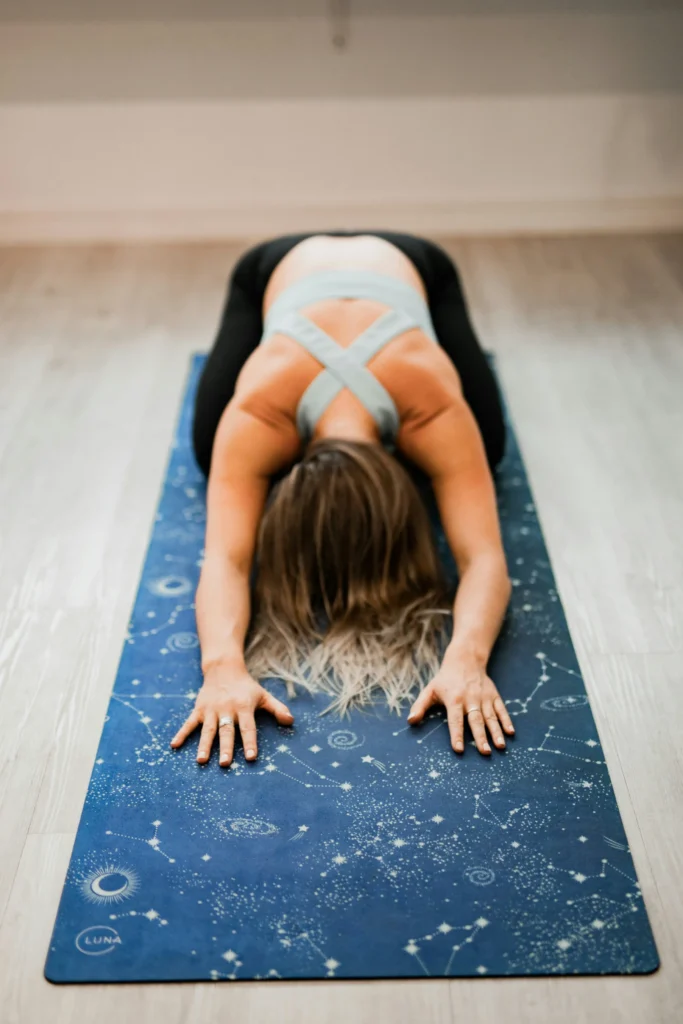
Choosing the right yoga mat for hot yoga requires careful consideration of various factors, from material composition to personal preferences. Follow these steps to find the perfect mat for your hot yoga practice:
- Assess Your Needs: Begin by assessing your specific needs and preferences for a hot yoga mat. Consider factors such as grip, cushioning, durability, and eco-friendliness to determine your priorities.
- Research Materials: Familiarize yourself with the different materials used in hot yoga mats, such as natural rubber, polyurethane, and microfiber. Learn about their unique properties and how they perform in a heated environment.
- Set Your Budget: Determine your budget for a hot yoga mat for hot yoga and explore options that fall within your price range. Remember that investing in a high-quality mat can enhance your practice and durability, making it a worthwhile investment.
- Read Reviews: Take the time to read reviews and testimonials from other hot yoga practitioners who have used the mats you’re considering. Pay attention to feedback on grip, durability, and overall performance to make an informed decision.
- Try Before You Buy: If possible, test out different mats at a yoga studio or store to get a feel for their grip and comfort. Consider borrowing a mat from a friend or instructor to see how it performs during a hot yoga session.
- Consider Additional Features: Look for additional features that may enhance your hot yoga practice, such as alignment markers, antimicrobial properties, or travel-friendly designs. Evaluate whether these features align with your needs and preferences.
- Make Your Selection: Once you’ve gathered all the necessary information and insights, make your final selection based on what best suits your needs and preferences. Trust your instincts and choose a mat that feels right for you.
By following these steps, you can confidently choose the right yoga mat for hot yoga practice, ensuring a comfortable, supportive, and enjoyable experience on the mat. Whether you’re a seasoned practitioner or new to hot yoga, investing in the right mat can make all the difference in your practice journey.
Top 3 Perfect Yoga Mat Alternatives
After understanding the key features to look for in a hot yoga mat for hot yoga and how to choose the right one, it’s time to explore some top-rated alternatives that excel in hot yoga environments. Here are three perfect yoga mat alternatives that have garnered praise from hot yoga practitioners:
1. Manduka PRO Yoga Mat:
- Material: Made from high-density cushioned PVC.
- Texture: Closed-cell surface prevents moisture absorption and ensures a slip-resistant grip.
- Durability: Exceptionally durable and built to withstand the rigors of daily hot yoga practice.
- Comfort: Provides ample cushioning for joints while maintaining stability and support.
- Eco-Friendly: Manufactured using environmentally friendly materials and production processes.
- Check out the link for further details.
2. Liforme Yoga Mat:
- Material: Constructed from natural rubber with a unique polyurethane top layer.
- Texture: Features a grippy surface with alignment markers to help improve posture and alignment.
- Sustainability: Made from sustainable materials and produced using eco-friendly methods.
- Support: Provides excellent cushioning and stability, making it ideal for intense hot yoga sessions.
- Grip: Offers superior grip, even in sweaty conditions, thanks to its innovative surface texture.
- Check out the link for further details.
3. JadeYoga Mat:
- Material: Crafted from natural rubber with a soft microfiber suede surface.
- Texture: Boasts a luxurious, velvety texture that provides exceptional grip and comfort.
- Portability: Lightweight and portable, making it perfect for yogis on the go.
- Sustainability: Made from sustainable materials and free from harmful chemicals.
- Durability: Built to last, with reinforced edges and a non-slip base for added stability.
- Check out the link for further details.
These three yoga mats have been specifically designed to meet the demands of hot yoga practice, offering superior grip, support, and durability. Whether you prefer a traditional PVC mat like the Manduka PRO, a natural rubber mat with alignment markers like the Liforme Yoga Mat, or a luxurious microfiber suede mat like the Yogi Bare Paws, there’s an option to suit every preference and budget.
Do you want to find more hot yoga alternatives? Visit:
- The Best Mat for Hot Yoga That Will Totally Transform Your Practice!
- 10 Non-Slip Top Yoga Mats for Hot Yoga Perfect for Your Next Session
Additional Tips for Hot Yoga Practice
In addition to choosing the right yoga mat, there are several additional tips that can enhance your hot yoga practice and maximize your enjoyment on the mat. Here are some key tips to consider:
- Stay Hydrated: Drink plenty of water before, during, and after your hot yoga session to stay hydrated and replenish lost fluids.
- Dress Appropriately: Wear lightweight, moisture-wicking clothing that allows your skin to breathe and helps regulate body temperature.
- Use a Yoga Towel: Place a yoga towel over your mat to absorb excess sweat and improve grip during poses and transitions.
- Take Breaks as Needed: Listen to your body and take breaks as needed to rest and rehydrate during your hot yoga practice.
- Focus on Breath Awareness: Pay attention to your breath and use it as a tool to stay grounded and centered, especially in challenging poses.
- Practice Mindfulness: Cultivate mindfulness and awareness throughout your hot yoga practice, staying present in the moment and connecting with your body and breath.
- Clean Your Mat Regularly: Keep your yoga mat clean and hygienic by wiping it down with a gentle cleaner after each use and allowing it to air dry thoroughly.
By incorporating these additional tips into your hot yoga practice, you can enhance your overall experience and reap the full benefits of this invigorating and transformative practice. Remember to listen to your body, honor your limitations, and approach your practice with an open heart and mind.
Conclusion of Yoga Mat for Hot Yoga
Choosing the perfect yoga mat for hot yoga practice is a crucial step towards enhancing your experience on the mat and unlocking the full benefits of this dynamic and invigorating practice. By understanding the unique needs of hot yoga and considering key features such as material composition, texture, grip, and durability, you can select a mat that supports your practice and elevates your performance.
Throughout this blog post, we’ve explored the essential elements of choosing a hot yoga mat, from understanding the specific challenges posed by hot yoga to identifying the key features to look for in a mat. We’ve also highlighted three top-rated yoga mat alternatives that excel in hot yoga environments, providing superior grip, support, and durability for practitioners of all levels.
Additionally, we’ve offered additional tips and recommendations to enhance your hot yoga practice, from staying hydrated and dressing appropriately to using a yoga towel and practicing mindfulness. By incorporating these tips into your practice routine, you can maximize your enjoyment on the mat and deepen your connection with your body, breath, and mind.
Ultimately, the journey towards finding the perfect yoga mat for hot yoga is a personal one, guided by your individual preferences, needs, and priorities. Whether you opt for a traditional PVC mat like the Manduka PRO, a natural rubber mat with alignment markers like the Liforme Yoga Mat, or a luxurious microfiber suede mat like the Yogi Bare Paws, the key is to choose a mat that feels right for you and supports your practice journey.
As you embark on your hot yoga journey, remember to approach your practice with an open heart and mind, embracing the heat, sweat, and challenges as opportunities for growth and transformation. With the right yoga mat as your foundation, you can confidently dive deeper into your practice, exploring new possibilities and unlocking your full potential on the mat and beyond.
Thank you for joining us on this exploration of choosing the perfect yoga mat for hot yoga practice. May your journey be filled with joy, vitality, and endless moments of connection, both on and off the mat. Namaste.

